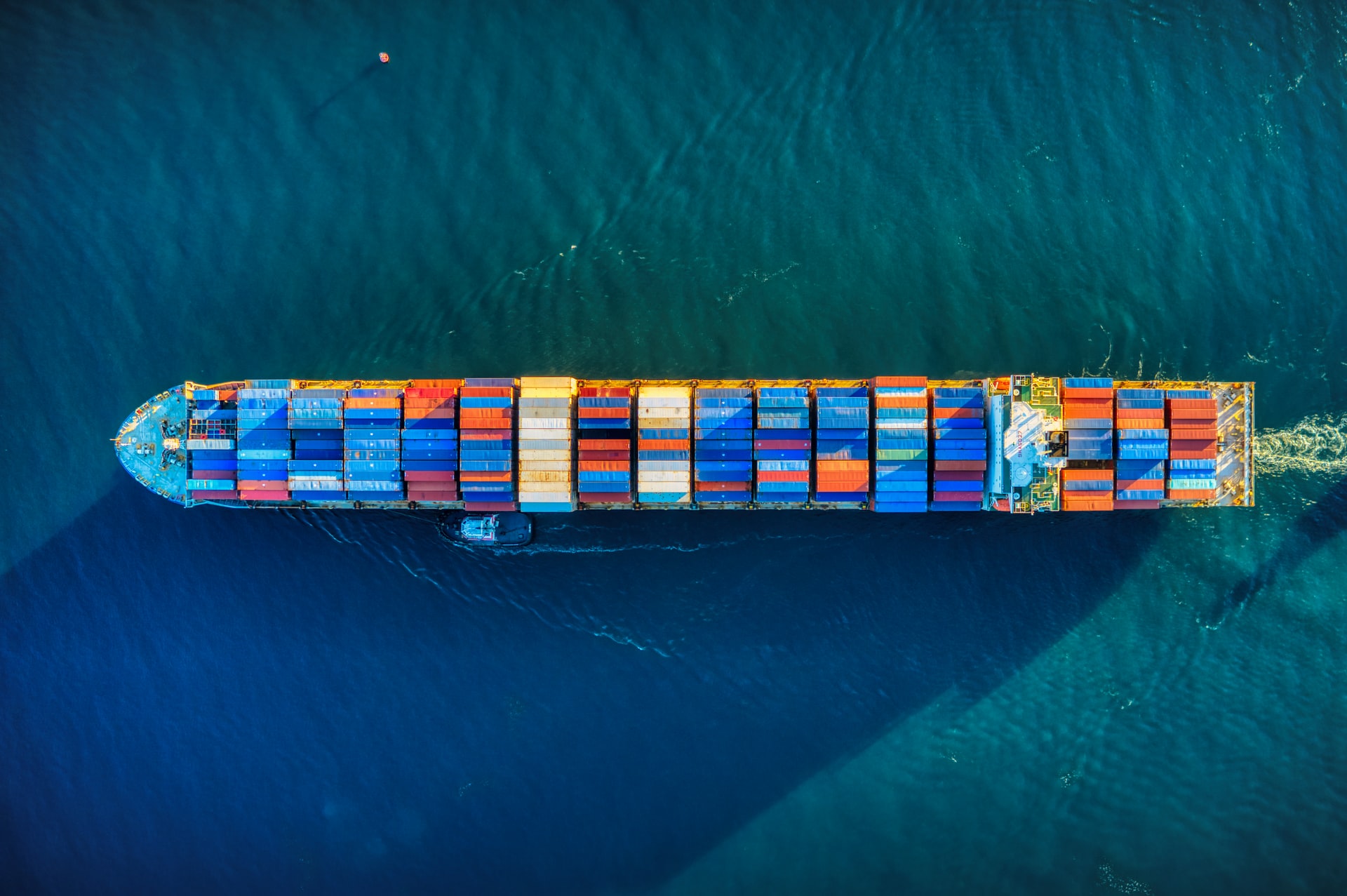
Maritime Mobility of Cargo
| Tags | CargoWater |
|---|---|
| Publication Date |
As mentioned earlier, approximately 90 percent of traded goods are relying on cargo ships as a means of transport to reach their final destination. [1]
In general, we can distinguish between long-distance transportation by ship, via cargo or container ships, and inland waterway transportation that is usually done by smaller ships to reach harbors that are elsewise not accessible for large cargo ships. [2]
While ships take a longer amount of time overall, especially in long-distance cargo transport, they are far superior in economic terms: In some cases, transporting freight by ship is four to six times less expensive than by air. [3]
Business Models, Trends and Innovations
Overall, the Process of shipping goods involves many different parties: manufacturers, sellers, buyers, ocean carriers, freight forwarders and customer brokerages as well as port authorities and insurance providers play major parts in the process. [4]
We will introduce a range of business models, trends and innovations that could shape the future of cargo transport by ship in the following section:
Manufacturers have the largest lever to influence the future of the shipping industry by introducing new technologies to the ships themselves. As mentioned in the section “propulsion technology”, there are several different novel propulsion systems available to the shipping industry.
As long-distance cargo ships carry the most weight and generally travel the longest distance out of all ships, their requirements of what the engine system has to be able to provide are pretty clear cut. For this reason, some propulsion systems are more suitable for these types of ships than others. Due to the distances travelled and the weight transported, these ships need the strongest engines available: For this reason, it is very likely that these ships will rely on fossil fuels for next years, before switching to more ecologically friendly alternatives. [5]
A transitional solution will most likely be LNG and LNG ready ships that already pose the majority of alternative propulsion systems in container ships and oil-tankers. [6]
While electric or hybrid propulsion is already attractive for offshore service ships, there is a long way to go for electric or hybrid cargo ships: On the bright side, China already introduced the world’s first fully electric cargo ship in 2016. While this is a major accomplishment in advancing the industry, the ship was only able to travel up to 80 km with its maximum of 2000 tonnes of cargo and 26 tonne heavy lithium battery. [7]
For the near future, projections of alternative fuel usage in the shipping industry are not looking bright though: For 2030, it is estimated that approximately 79% of shipping energy will still come from heavy fuel oil (HFO) or MGO (marine gas oil). For 2050, the numbers are slightly more positive: 39% of shipping energy is projected to be supplied by carbon-neutral fuels. [8]
Sources
[1] Deutsches Zentrum für Luft- und Raumfahrt e.V. (DLR). (2011, December 19). LNG as an alternative fuel for the operation of ships and heavy-duty vehicles: Short study in the context of the scientific supervision, support and guidance of the BMVI in the sectors Transport and Mobility with a specific focus on fuels and propulsion technologies, as well as energy and climate. pp. 9-10.
[2] Eurostat. (2021, September). Inland waterways - statistics on container transport. https://ec.europa.eu/eurostat/statistics-explained/index.php?title=Inland_waterways_-_statistics_on_container_transport.
[3] Crowley. (2018, March 20). Top Five Advantages of Ocean Freight Shipping. https://blog.crowley.com/advantages-of-ocean-shipping.
[4] Wu, M. (2020, June 3): What is Sea Freight?. https://blog.gofreight.co/education/what-is-sea-freight.html.
[5] DVZ. (2021, September 7). Alternative Schiffsantriebe - Schwieriger Wechsel. https://www.dvz.de/login.html?redirect_url=/rubriken/test-technik/alternative-antriebe/detail/news/schwieriger-wechsel.html.
[6] SEA\LNG. (2019, July 5). Anzahl der weltweit betriebenen und bestellten Schiffe mit alternativen Antrieben im Jahr 2019 (nach Schiffs- und Antriebsart) [Graph]. In Statista. https://de-statista-com.eaccess.ub.tum.de/statistik/daten/studie/1188931/umfrage/schiffe-mit-alternativen-antriebsarten-weltweit/.
[7] Hindustan Times. (2017, November 14). China launches world's first fully electric cargo ship. https://www.hindustantimes.com/world-news/china-launches-world-s-first-fully-electric-cargo-ship/story-ceg5ZbMb67yOLpYFZNdg4I.html.
[8] DNV (2020): Maritime Forecast to 2050. https://eto.dnv.com/2020/Maritime/forecast. pp. 15-17.